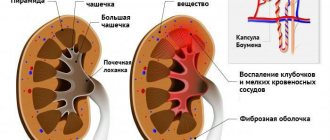Pleuritis is an inflammation of the pleura that occurs in animals of any age, sex and breed. The pleura is a serous membrane that lines the inside of the chest cavity and also covers the lungs. The pleura forms symmetrical right and left sacs, the space between which is called the mediastinum. The mediastinum contains the trachea, esophagus, heart, large blood vessels, lymph nodes, and nerves.
A special feature of the pleura is that between its layers there are slit-like cavities that contain a small amount of serous fluid. It is needed to reduce the friction force of the pleura during breathing.
In addition, each pleural layer has microscopic slit-like openings in the mediastinum. Under unfavorable conditions, this contributes to the rapid transition of pathological processes from the pleura to the lungs and vice versa.
Classification of pleurisy
By origin, pleurisy is primary and secondary.
Primary pleurisy is a lesion of the pleura itself, when the process of inflammation initially develops in its tissues.
And secondary pleurisy is a complication of the disease of neighboring organs. In this case, first, for example, lung diseases, tumor processes, etc. arise, and after this the inflammation spreads to the pleura. Secondary pleurisy is much more common than primary pleurisy.
According to the course, pleurisy can be acute, subacute, or chronic.
A cat usually suffers from acute pleurisy for up to 14 days, subacute can last up to 1.5 months, and chronic pleurisy lasts for several months or even years.
Based on the localization of the process, a distinction is made between limited, that is, local pleurisy, and diffuse, which spreads in different places of the pleura.
Unilateral pleurisy can affect the right or left side of the chest cavity, and bilateral pleurisy can affect both.
Depending on the nature of the process and the presence of effusion, pleurisy can be wet or dry.
With wet pleurisy, inflammatory fluid is released into the pleural cavity. The composition may be dominated by blood, pus, protein, microorganisms and fragments of decayed tissue.
With dry pleurisy, the exudate is rich in protein - fibrinogen. It easily curls up and settles on the surface of the pleura, while liquid does not accumulate.
Epidemiology
The literature regarding this pathology contains a small number of retrospective studies. However, this allows us to get an idea of the extent of its manifestation.
If we talk about breed predisposition, then, probably, chylothorax of an idiopathic nature is found in the Afghan hound, although the authors themselves (TW Fossum et coll., 1986) do not attach much importance to this. Most cases of chylothorax are found in medium and large breed dogs. There is only one case of this pathology described in a poodle (NC Myers et al., 1996). As for cats, the greatest predisposition was noted in European and Himalayan breeds (TW Fossum et al., 1968–1989).
Chylothorax can occur regardless of age, but its idiopathic nature is more often noted at 5–6 years of age (TW Fossum et coll., 1969-1989).
Causes of pleurisy in cats
Factors that cause inflammation can enter the pleura from the lungs, through the bloodstream or lymphatic system.
These include:
1. Pathogens: viruses (for example, FIP), bacteria (cocci), fungi, protozoa, helminths.
2. Inflammatory processes that spread to a number of underlying organs. For example, from the lungs (pneumonia, abscesses), pericardium, etc.
3. Tumors of the lungs, esophagus, mediastinal lymph nodes or other organs of the chest cavity.
4. Injuries and operations on the pleura and chest.
5. Pathologies of the abdominal organs:
- pancreatitis;
- renal failure (uremic pleurisy);
- When the diaphragm ruptures, organs are displaced from the abdominal cavity into the chest cavity and compress the lungs, causing inflammation of the pleura.
6. Taking medications, for example, furadonin.
7. Predisposing factors: spring - autumn period, hypothermia, overwork, unbalanced nutrition and transportation, weakened immunity, stress.
Video
More photos Author(s):
T.A.
Alimova, Zh.Zh. Kumekbaeva Organization(s):
SEC "Equi Lab", Almaty, Kazakhstan
Journal:
No. 1 - 2021 UDC: 619:636.8
Abstract
This article, using the example of a clinical case of the development of breast cancer and metastatic lesions of the pleura in a cat, examines the use of various diagnostic methods - radiographic, ultrasonographic studies, biochemical, cytological analysis of effusion, as well as cytological and histological analysis of neoplasms, which, when used in combination, significantly expand the amount of information obtained and facilitate diagnosis.
Research methods such as biochemical and cytological analysis of pleural effusion, due to the simplicity of the procedure and the speed of obtaining results, should be included in the complex of diagnostic techniques when detecting metastatic lesions of mammary cancer in animals. Summary
In this article, using the example of a clinical case of development of breast cancer and metastatic lesions of the pleura in a cat, the application of various diagnostic methods was reviewed.
These included radiographic, ultrasonography, biochemical and cytological analyzes of effusion, as well as cytological and histological analysis of neoplasms, which in their complex use significantly expand the volume of information received and facilitate the diagnosis. Such research methods as biochemical and cytological analysis of pleural effusion, due to the simplicity of the diagnostic formulation and the speed of result attainment, should be included in the complex of diagnostic techniques in detecting metastatic lesions of breast cancer in animals. Introduction
Tumors of the mammary glands in cats occupy third place in terms of occurrence after lymphomas and skin tumors [1], accounting for up to 17% of all tumor pathologies in animals of this species [2]. More than half of all mammary gland neoplasms in cats are mammary gland cancer [3], the features of which are the aggressiveness of the course [4] and early metastasis [5]. Breast cancer (BC) in cats, unlike dogs, is not preceded by dishormonal processes [1], although the use of hormonal drugs for castration may contribute to its development [6]. The main routes of breast cancer metastasis in cats are lymphogenous and hematogenous [7]. With lymphogenous metastasis, metastases are determined in regional lymph nodes, with hematogenous metastasis - in the lungs, liver, and less often in other organs [8]. In cats, in 70-80% of cases, with hematogenous metastasis, damage to the pleura is predominantly detected, which entails a change in the permeability of its capillaries, impaired lymph circulation, accumulation of fluid in the pleural cavity and the development of tumor pleurisy [9,10,11]. In cats with a disseminated form of mammary cancer, 75.8% of cases of pleural lesions with the development of tumor pleurisy, 13.8% of cases of lung lesions, and 10.4% of cases of metastasis to the skin were detected [3]. Diagnostic methods such as medical history, clinical examination, chest radiography, ultrasonographic, cytological, histological studies are among the main methods for diagnosing breast cancer and its metastases in cats. In addition, the arsenal of diagnostic studies also includes magnetic resonance and computed tomography [8], although not all veterinary clinics can currently afford such studies. The sensitivity of radiographic examination does not allow diagnosing formations with a diameter of less than 0.5 cm [8]. In cats, metastatic, multiple tumor nodes, localized mainly in the pleura, may be too small - the size of a millet grain [12], therefore, the radiographic method of examination, detecting the presence of fluid in the chest cavity, often does not allow identifying metastatic lesions of breast cancer in cats. Ultrasonographic examination, for the same reason, will not be able to detect small metastatic lesions in the pleura, allowing only to confirm the presence of free fluid in the chest cavity of cats. Histological examination of mammary gland tumors and their metastatic lesions, which is a morphological research method, is today the final stage of diagnosis, since it allows one to give a detailed morphological description of the formation, histologically determine the shape and type of the tumor, the degree of its differentiation and proliferative activity, assess the prognosis of the disease and choose postoperative treatment protocol [13]. The immunohistochemical research method, which is based on the principle of specific interaction of tissue and cellular antigens with labeled antibodies [14], provides more detailed morphological characteristics for verifying poorly differentiated tumors, establishing tumor histogenesis, determining prognosis and identifying the sensitivity of tumor tissue to chemotherapeutic drugs. Cytological examination, which also refers to morphological methods for analyzing the cellular composition of a pathological process, is often uninformative for the diagnosis of breast cancer due to the peculiarities of taking material during a fine-needle biopsy. With TIAB of breast tumor material, there is a risk of obtaining material from a necrotic focus, cystic cavity or area of secondary inflammation, therefore the vast majority of cytological studies of breast tumors require mandatory histological analysis [13]. But, for the diagnosis of metastatic breast cancer lesions in the chest cavity and, in particular, in pleural effusion in cats, the cytological research method undoubtedly has a number of advantages. These are the non-invasive and low-invasiveness of the procedure for taking material, the possibility of taking material without prior sedation of the animal, the speed of performing a cytological analysis, which ultimately makes it possible to quickly determine the morphology of the cells of the pleural effusion, the benign or malignant nature of the process, and help in most cases to make an accurate morphological diagnosis [10]. Pleural effusion can form for various reasons, therefore, when examining it, in addition to cytological analysis, which characterizes the number and morphological characteristics of the detected cells, a biochemical study of the effusion to determine the level of protein (allows us to characterize the effusion as a transudate, modified transudate or exudate), its color ( light yellow in transudates and serous exudates, brown in hemorrhagic ones) and transparency (cloudy in hemorrhagic, purulent and chylous exudates). Hemorrhagic exudate obtained during pleural puncture is highly likely to indicate its tumor etiology and makes it possible to detect tumor cells in 80-90% of cases during cytological examination of pleural fluid [15]. Preservation of the color of the sediment after centrifugation of the exudate is also important. If the reddish or brown color remains, the hemorrhagic nature of the exudate is undoubted, but if the liquid after centrifugation has a yellowish color with a red precipitate of formed elements, then there may be a traumatic admixture of blood that arose secondary to the puncture (16). Cytological analysis of transudates - fluid with a low protein content (less than 25 g/l) and low cytosis (less than 1500 nucleated cells in 1 μl) is impractical [17]. But, exudates with a high protein content and high cytosis can provide information about the detection of tumor cells, which is an absolute diagnostic sign of tumor exudative pleurisy [18, 19]. The metastatic nature of effusion in breast adenocarcinoma can be judged based on the detection of fairly similar cancer cells in routinely stained cytological preparations [20], most often related to glandular cancer [21]. The morphological features of the papillary and glandular-papillary complexes found in the pleural fluid facilitate the histological diagnosis of breast cancer and its metastatic lesions. Thus, breast cancer, with its high degree of differentiation, is characterized by the detection of small cells in the papillary and glandular-papillary complexes in the pleural fluid. With a decrease in the differentiation of breast cancer, signs of cellular anaplasia increase, pronounced polymorphism, an increase in the diameter of cells and nuclei, loose cell accumulations, an increase in the number of mitotically and amitotically dividing cells, the presence of signs of fatty, vacuolar, hydropic degeneration of cells, an increase in their size and nuclei, the presence of giant destroyed cells with chromatin changes [22].
Description of a clinical case
We describe a clinical case of metastatic pleurisy in an 11-year-old cat that developed 4 months after removal of a mammary tumor. During the initial treatment, the animal’s owners noticed on the last bags (4 pairs) of the mammary gland a tumor node with a diameter of 3.5 * 2.5 cm, which tends to grow over the course of a month and is prone to ulceration. The condition of the animal was characterized as satisfactory. Regional inguinal lymph nodes were “calm”, body temperature and appetite were normal. According to the owners, the last heat was observed 1 year ago; the hormonal drug “Covinan” was used for contraception. Ultrasound of the abdominal cavity, OCA and BCA of blood did not reveal any serious deviations from the physiological norm. Chest X-ray was not performed at this initial visit. Cytological examination of the material obtained using TIAB of a breast neoplasm was carried out using staining of cytological preparations with Romanovsky’s dye (according to N.G. Alekseev) with their preliminary fixation with Leishman’s dye (16). A cytological study revealed a high cellularity of the cytological preparation, with the cells arranged mainly in the form of glandular complexes, with the presence of polymorphism and degenerative changes in cells and nuclei, with a lack of order in the arrangement of cells in the complexes, with a violation of the nuclear-cytoplasmic ratio towards the nucleus. The shape of the cells is round, medium and large in size, the nucleus is round or irregular in shape, with uneven contours of the nuclear membrane, with large nucleoli, in the amount of 1-4, with moderate, basophilic cytoplasm. The background of the preparation contained red blood cells and a small number of degenerative neutrophils. These changes made it possible to characterize the cytological picture as “Breast carcinoma. Neutrophilic bacterial inflammation" (Fig. 1-4).
Subsequently, after an operation to remove the mammary gland with a neoplasm, as well as regional lymph nodes and the uterus, the postoperative material was submitted for histological examination, in which a neoplasm of the mammary gland of a complex type, tubular-papillary structure, represented by atypical polymorphic cells of cubic and cylindrical in shape, having rounded eccentric nuclei containing unevenly distributed clumpy chromatin and 2-4 nucleoli. The cytoplasm of the cells is moderate, basophilic, with the presence of mitoses in the amount of up to 5 per field of view at x40, with signs of secretion in some cells, with the presence of cysts in the tumor tissue, with moderate vascularization of the tissue and moderately pronounced signs of secondary inflammation.
This histological examination gave grounds to determine the formation of the mammary gland as moderately differentiated tubular-papillary breast cancer of the complex type (Fig. 5-8). However, no foci of metastasis were found in distant regional lymph nodes.
For several months after removal of the mammary tumor, symptomatic treatment and chemotherapy, the cat's condition was satisfactory. However, 4 months after the initial treatment and removal of the mammary tumor, the cat’s condition worsened. Tachypnea, pallor of the mucous membranes, loss of body weight, lethargy, and refusal to feed were noted.
Ultrasound and radiographic examination (Figure 9) revealed the presence of pleural effusion. The effusion, after thoracentesis, was placed in a tube with EDTA and subsequently subjected to biochemical and cytological studies.
Total protein was determined using the standard method for determining total protein in blood serum using the biuret method.
The resulting effusion was a hemorrhagic exudate, in which the total protein content was 37.9 g/l and the cell mass was 4500 nucleated cells per 1 μl.
A cytological examination of the pleural fluid confirmed the presence of adenocarcinoma cells in it, as a result of metastatic lesions of the pleural cavity of breast cancer, by the detection in the exudate of atypical polymorphic cells with signs of glandular differentiation, located in small multilayered complexes, with cells tightly adjacent to each other, as well as a scattered type (Fig. 10-16). The cells had a large, round nucleus, sometimes with uneven contours, with unevenly distributed coarse granular, clumpy chromatin and 1-3 pronounced large nucleoli. The cytoplasm of the cells is moderate, basophilic. The nuclear-cytoplasmic ratio is disturbed towards the nucleus. In the microenvironment there are “naked nuclei”, red blood cells, neutrophils, mesothelial cells.
Conclusion
This case of breast cancer in a cat confirms its high degree of malignancy and aggressive clinical course, as well as the hematogenous route of breast cancer metastasis in this animal, with the development of metastatic pleurisy.
The development of breast cancer in this animal could have been facilitated by the use of hormonal drugs used to suppress sexual function.
The cytological research method, with its undoubted advantages in identifying the morphological features of cells during changes in the mammary gland in animals, must necessarily be based on histological examination of neoplasms, which is the final stage of diagnosis for tumor lesions of the mammary glands and provides the most complete description of breast cancer and its metastatic lesions.
Diagnosis of metastatic lesions of the pleura in breast cancer should be carried out comprehensively using data from anamnesis, clinical symptoms and a number of studies, which, in addition to standard blood test methods (general clinical and biochemical blood tests), must necessarily include radiographic, ultrasonographic studies, biochemical and cytological studies of pleural effusion.
A biochemical study of pleural effusion, which makes it possible to characterize its type, in conjunction with a cytological study of the cellular composition of the effusion, facilitates the diagnosis of metastatic lesions in breast cancer.
Cytological examination of pleural effusion in case of metastatic lesions of the pleura should be used as one of the first in a series of diagnostic techniques due to the speed of obtaining, preparing, fixing and staining cytological preparations, which ultimately improves and expands the volume of information obtained about breast cancer and its metastatic lesions in animals.
Literature
1. Yakunina M.N. Mammary tumors of dogs and cats. Second edition, revised. M.: Onebook.ru, 2014.
2. Gregyrio H., Pires I., Seixas F., Queriroga F. Mammary invasive micropapillary carcinoma in a male cat: Immunohistochemical description and clinical followup. Acta Vet. Hung, 2012.
3. Yakunina M.N., Treshchalina E.M., Shimshirt A.A. Analysis of the incidence and clinical and morphological characteristics of mammary cancer in dogs and cats. M.: Veterinary Medicine, 2010, No. 3-4, pp. 21–23, pp. 44 - 46.
4. Karin U. Sorenmo. Mammary gland tumors in cats: Risk factors, clinical presentation, treatments and outcom. 36th World Small Animal Veterinary Congress, Jeju, Korea, 2011
5. Yakunina M.N. Treatment options for disseminated mammary cancer in cats. Veterinary Medicine, 2011, No. 2, pp. 28-30.
6. Yamagami T, Kobayashi T, Takahashi K, et al. Prognosis for canine malignant mammary tumors based on TNM and histologic classification. J. Vet Med Sci, 1996, 58, pp. 1079-1083.
7. Yakunina M.N. Breast cancer in dogs and cats. Vetpharma, Medforum, 2011, No. 2, pp. 64 - 70.
8. Kuznetsova A.L., Lisitskaya K.V., Garanin D.V., Fedotova O.Yu. Neoplasms of the mammary gland. Oncology of small domestic animals. M.: Publishing house “Scientific Library”, 2021, p. 287-307.
9. Golubeva V.A., Ponomarkov V.I. Canine mammary cancer. Veterinary Medicine, 1988, No. 2, p. 61–63.
10. Lisitskaya K.V., Mitrokhina N.V. Morphological diagnostic methods. Oncology of small domestic animals. M.: Publishing house "Scientific Library", 2021, pp. 108 - 157.
11. Popovich A.Yu., Glazkov A.V. Treatment of metastatic pleurisy in breast cancer. Neoplasm, 2010, T.4, No. 1(5), pp.43-49.
12. Fomicheva D.V., Timofeev S.V., Treshchalina E.M. Features of metastasis of mammary cancer in cats. Russian Veterinary Journal, 2007, No. 2, 30-32.
13. Mitrokhina N.V. Clinical and morphological characteristics of mammary gland tumors in small domestic animals. Vetpharma, 2016, 5.
14.Mitrokhina N.V. Immunohistochemical diagnosis of melanoma using the example of a clinical case of the disease in a dog. Vetpharma, 2021, 4 (38), 96-100.
15. Grigoruk O.G., Bazulina L.M., Dobrovolskaya L.N. and others. Features of carcinomatous pleurisy in breast cancer (cytological diagnostic method). Tumors of the female reproductive system. M.: Publishing house "ABV-press", 2010, 1, 10-14.
16. Bokunyaeva N.I., Zolotnitskaya R.P., Korenevskaya M.I. etc. Handbook of clinical laboratory research methods. M.: Medicine, 1968, 435 p.
17 Hirschberger J., DeNicola, D.B., Hermanns W., et al. Sensitivity and specificity of cytologic evaluation in the diagnosis of neoplasia in body fluids from dogs and cats. Vet.Clin.Pathol, 1999, Vol.28, 4, 142-146.
18. Akopov A. L. Pleural effusion in lung cancer. Pulmonology; 2001, 4, 72–77.
19. Ilnitsky R.I. et al. Pleural effusion syndrome: differential diagnosis and treatment tactics. Ukrainian Pulmonological Journal; 2004, 3, 64–68.
20. Dolgov V.V., Shabalova I.P., Mironova I.I. etc. Exudate fluids. Laboratory research, Tver, 2006, 161 p.
21. Bolgova L.S., Marinenko S.V. Modern possibilities of differential cytological diagnosis of proliferating mesothelium, mesothelioma and cancer metastases (literature review and results of our own research). Clinical Oncology, 2015, 4(20).
22. Lipova V.A., Kotov V.A. Differential diagnosis of tumors based on the cellular composition of serous fluids. Textbook for doctors, St. Petersburg, 2003.
Back to section
Symptoms of pleurisy in cats
- Depression, elevated body temperature; the mucous membranes of the oral and nasal cavities, the conjunctiva are bluish in color. In severe cases, exhaustion occurs.
- Respiratory system disorders: - shallow rapid breathing, increased heart rate, dry painful cough; - shortness of breath with exudative pleurisy with difficulty breathing; - if the layers of the pleura grow together as a result of inflammation, then abdominal breathing is observed, which is carried out due to contraction of the diaphragm and the abdominal wall; - with unilateral exudative pleurisy with a large amount of fluid, the chest becomes asymmetrical during breathing, and the cat takes a forced position that makes breathing easier;
- Pain in the chest when feeling and listening;
- Brown, foul-smelling urine, dry feces.
Symptoms
What are the symptoms of this disease? Let us list the most typical ones, allowing us to more or less accurately make at least a preliminary diagnosis:
- Difficulty, or sharply rapid, shallow breathing.
- The cat takes a sitting position and stretches its head up. A very specific symptom, indicating the accumulation of a large amount of exudate. It is important to remember that in a different position the animal simply cannot breathe.
- Cyanosis (blue discoloration of all visible mucous membranes).
- The cat begins to breathe through its mouth.
- Loss of appetite.
- Lethargy, apathetic state.
For many cats, the most characteristic symptom is a wide open mouth, rapid and very shallow breathing. As a rule, it is easier for them to inhale (when exhaling, a strong pain reaction is noted). The development of “abdominal” breathing is also very characteristic.
Diagnosis of pleurisy in cats
First of all, the doctor collects information about the animal’s life history and disease. This is followed by a clinical examination, thermometry, and auscultation (listening to breathing). With dry pleurisy, auscultation reveals a pleural friction rub. Putrefactive pleurisy corresponds to the sound of splashing.
A necessary study is x-ray diagnostics, which shows the presence of pathological fluid in the chest cavity. In addition, the image usually shows the general condition of the heart and lungs.
Pleurisy in cats - radiograph in the right lateral projection
To assess the severity of the condition and the severity of the body's response to the disease, a general clinical blood test will be needed. It pays attention to the increase in neutrophilic leukocytes.
To study the nature of the exudate, thoracentesis may be required - a puncture of the chest wall.
Also, as necessary, diagnostic measures are carried out for concomitant diseases.
Diagnostics: examination, x-ray and thoracentesis
Diagnosis of pulmonary pleurisy begins with a visual examination of the cat, measuring body temperature, listening to the sternum area with a phonendoscope for the presence of wheezing and noise. The veterinarian will definitely take a general blood test to determine the level of neutrophil leukocytes (during inflammatory processes in the body, their level is usually higher than normal).
One of the effective methods for diagnosing pleurisy in a cat is radiography, which is a method of dynamic research using x-rays. In real time, using this device, the veterinarian is able to monitor the condition of the animal’s internal organs and select the most suitable projection for the image in order to determine the presence or absence of inflammatory processes in the lungs.
The most important condition for making the most accurate diagnosis is a procedure called “thoracentesis”, which consists of puncture of the pleura through the intercostal space for the purpose of diversion, aspiration and further study of the pathological contents. In addition, this type of diagnosis allows you to normalize respiratory function in real time absolutely painlessly, so the procedure is performed without sedation or local anesthesia and is well tolerated by pets.
Treatment of pleurisy in cats
First of all, to treat pleurisy, you will need antibiotics, sulfonamides, analgesics, multivitamins, diuretics, as well as other drugs, based on the symptoms of concomitant diseases.
For purulent and putrefactive pleurisy, thoracentesis is used. It is necessary to remove exudate, followed by washing the pleural cavity with antiseptic solutions.
Prerequisites for a speedy improvement in well-being and recovery are rest and a balanced diet.
Diagnostic measures
Only a specialist in a veterinary clinic can make an accurate diagnosis. If you notice these symptoms, immediately take your pet to a medical facility for examination and appropriate examination. The doctor will question the owner in detail about the onset of this disease and listen to the animal’s breathing through a phonendoscope.
Afterwards, the cat will need to undergo the following examinations: x-ray and ultrasound of the chest, general and biochemical blood tests; puncture of the sternum and laboratory testing of the resulting effusion.
Prognosis for recovery
If you start timely treatment, severe consequences can be avoided. In advanced cases, death is possible. Only a veterinarian can select individual therapy for your pet after passing all the necessary examinations.
Self-medication is strictly prohibited. The accumulated liquid is pumped out only in a medical facility. Otherwise, your blood pressure may rise sharply, causing your heart or breathing to stop (heart or respiratory failure).
A favorable prognosis is possible with timely detection of the disease and effective therapy, which can last for a fairly long period (from one to two months). There is chronic pleurisy, it is treated throughout life. In this case, the owner must carefully monitor the cat’s diet and give medications daily to support the cardiac and respiratory systems.
Preventive actions
It is possible to prevent the development of pathology, the main thing is to avoid hypothermia of the pet. You cannot take your animal outside during the cold season and it is not recommended to bathe it. The owner must carefully monitor the diet: products must contain a large amount of protein; vitamin and mineral supplements can be used as complementary foods.
For preventive purposes, the owner is obliged to bring the cat annually for a routine examination. Monitor your pet to ensure that it does not suffer a chest injury. The healthiest foods to give to an animal are: legumes, fish, lean beef. It is necessary to exclude fatty pork, salty and fried foods from the diet.
Treatment of pathology
The most severe complication that can develop due to pleurisy is respiratory failure. To avoid this, it is necessary to promptly identify the disease and carry out effective therapy. The main procedure that is carried out in a veterinary clinic is the removal of serous fluid from the pleural cavity by puncturing the chest.
Before performing the manipulations, the animal is given local anesthesia. Pleurisy is also treated with surgery. This is the most effective and efficient method to combat this pathology.
Afterwards, the pet is given painkillers, antimicrobials and antibiotics to prevent the spread of infection in the body. To maintain cardiac activity, the veterinarian prescribes appropriate medications. In severe cases, therapy is carried out using intravenous medications.











